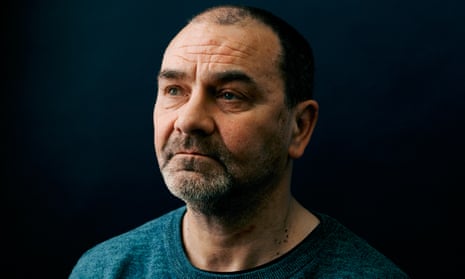A new forensic investigation is under way into a rape case that led to a man spending 17 years in prison after DNA linked another unknown male to the crime.
Andrew Malkinson was convicted of raping a 33-year-old woman by a motorway in Greater Manchester in 2003.
There was never any DNA evidence against him and he always insisted he was innocent, spending a decade longer in prison as a result.
The Criminal Cases Review Commission (CCRC), which investigates potential miscarriages of justice, has now commissioned its own forensic inquiries into the case. It comes after Malkinson’s legal team discovered evidence that there was another man’s DNA on key samples taken from the victim.
The victim said she remembered causing a “deep scratch” to her attacker’s right cheek but Malkinson was seen at work with no scratches on his face the next day. Testing using new forensic techniques in 2020 showed traces of male DNA on fingernail scrapings, as well as on fragments of her clothing. This did not match her then boyfriend or Malkinson.
The CCRC decides if cases can be referred back to the court of appeal and has twice previously turned down Malkinson’s attempts to overturn his conviction, in 2012 and 2020. A new application was made in May last year and the CCRC has yet to decide on it.
Since learning that the CCRC would be conducting its own forensic investigation, Malkinson’s lawyers have sent it a dossier of 34 suspects put forward during the police’s original investigation. These include 21 men with violent records and eight accused or convicted sex offenders. Most were not traced or spoken to by police.
Appeal, a charity and law practice that is representing Malkinson, believes police got “tunnel vision” in the case.
Malkinson, who had no previous convictions for violence, said: “I could never do anything like that. They just seemed to fit the evidence around me.”
Despite nearly two decades of waiting, he has not given up on clearing his name. “I’ve never lost hope,” he said. “I’m telling the truth and that’s what gave me hope all through those years.”
His solicitors say Malkinson did not match key parts of the victim’s original description of the attacker. He was three inches taller, had chest hair, when her attacker’s chest was described as hairless and shiny, and also had prominent tattoos on his forearms when no tattoos were mentioned.
They say Malkinson was from Grimsby and had only recently arrived in Manchester after several years abroad, but the victim said her attacker had a “local accent” with “a tinge” of something else.
Malkinson’s conviction rested on witness identification, which can be flawed.
The solicitors also say information had subsequently come to light that called into question the evidence of two key witnesses.
Greater Manchester police (GMP) did not disclose that two key witnesses presented to the court as “honest” had 16 convictions for 38 offences between them, including dishonesty. The two witnesses said they had seen Malkinson near the scene of the crime before the attack while out driving together in the early hours of the morning.
Malkinson was also picked out by the victim in a video identity parade, which was carried out at 1am. She told the court she was “more than 100%” certain he was her attacker and he was convicted by a 10-2 majority verdict.
Emily Bolton, Malkinson’s solicitor and the director of Appeal, said: “Many suspects were put forward to police, including individuals with convictions for rape.
“Instead of properly pursuing these leads, police focused their efforts on trying to devise a case against Andy, despite him not matching the victim’s description in striking ways and having no track record for violence.
“We’ve sent this dossier to the CCRC because we of course would welcome the real perpetrator of this crime being brought to justice. However, the new DNA evidence already presented that excludes Andy clearly justifies sending his case back to the court of appeal.”
Malkinson was 37 when he went to prison, saying that DNA would one day clear him. He was released in December 2020 but as a convicted sex offender has struggled to rebuild his life.
“It’s horrible,” he said. “My life is on hold until I can overturn the conviction. I can’t get a decent job. I’m having to scrape by on the scraps of minimum wage jobs that nobody really wants.”
GMP said it was aware of the new review by the CCRC and would be assisting it. It has appointed a senior officer to review the case. A spokesperson said a public complaint had been recorded by its professional standards branch “regarding concerns raised in relation to certain aspects of the historical conduct of the case” and for this reason “it would be inappropriate to comment further”.
A CCRC spokesperson said it took all its cases seriously, adding: “We have a duty to examine new evidence carefully and assess its impact on the case as a whole and carry out all the investigations we consider necessary to meet our responsibilities.
The CCRC said Malkinson’s case remained “under active review” and that further submissions from his lawyers needed to be considered, which “inevitably lengthens the time the review will take”.










